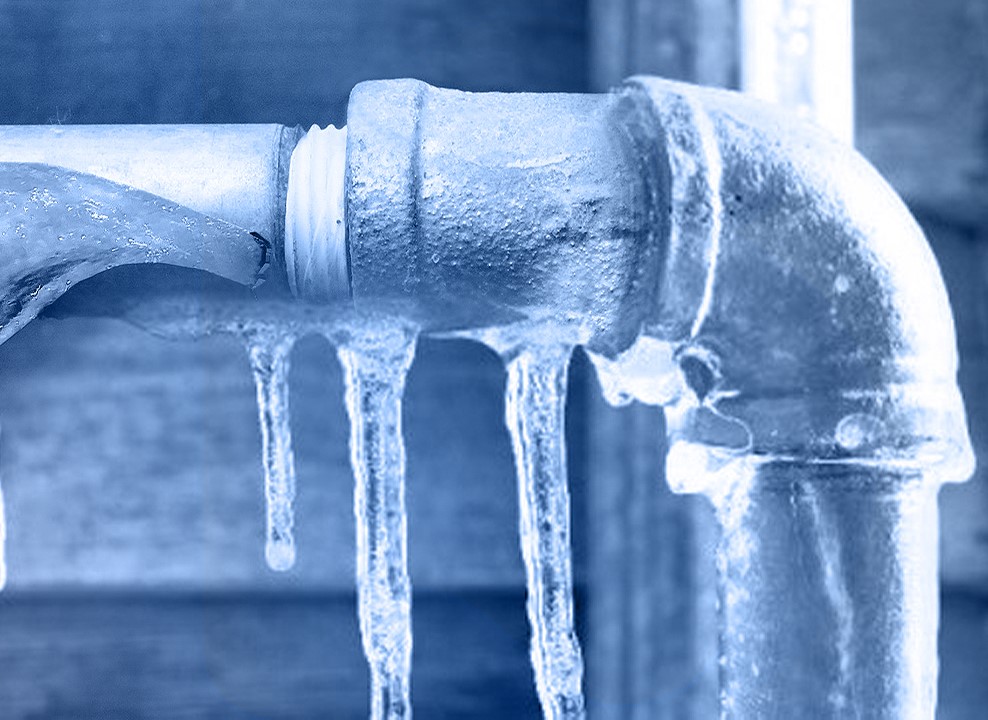Are you currently interested in insight on Preventing and dealing with frozen pipes?

Winter can damage your pipes, particularly by freezing pipes. Right here's just how to prevent it from taking place and what to do if it does.
Intro
As temperatures drop, the risk of icy pipelines boosts, potentially leading to expensive fixings and water damages. Comprehending exactly how to prevent frozen pipelines is important for home owners in chilly climates.
Understanding Icy Pipes
What creates pipelines to freeze?
Pipes freeze when subjected to temperature levels below 32 ° F (0 ° C) for prolonged periods. As water inside the pipelines ices up, it broadens, taxing the pipeline walls and possibly causing them to burst.
Dangers and problems
Icy pipes can cause supply of water disruptions, property damage, and pricey repairs. Ruptured pipelines can flooding homes and cause considerable architectural damage.
Indications of Frozen Water Lines
Determining frozen pipelines early can prevent them from bursting.
Just how to recognize icy pipes
Look for reduced water flow from taps, uncommon smells or noises from pipes, and visible frost on revealed pipelines.
Avoidance Tips
Insulating susceptible pipelines
Wrap pipelines in insulation sleeves or use heat tape to secure them from freezing temperature levels. Concentrate on pipes in unheated or exterior locations of the home.
Home heating strategies
Keep interior areas properly heated, especially areas with pipes. Open up closet doors to allow cozy air to circulate around pipes under sinks.
Protecting Outdoor Pipes
Garden hose pipes and outdoor taps
Disconnect and drain garden tubes prior to winter. Install frost-proof spigots or cover exterior faucets with protected caps.
What to Do If Your Pipelines Freeze
Immediate actions to take
If you think icy pipelines, maintain faucets open to ease pressure as the ice thaws. Use a hairdryer or towels soaked in hot water to thaw pipes gradually.
Long-Term Solutions
Structural modifications
Take into consideration rerouting pipelines far from exterior wall surfaces or unheated locations. Add added insulation to attics, basements, and crawl spaces.
Upgrading insulation
Invest in top notch insulation for pipelines, attics, and wall surfaces. Correct insulation helps keep regular temperatures and minimizes the risk of frozen pipes.
Verdict
Preventing icy pipes calls for positive actions and quick responses. By comprehending the reasons, signs, and preventive measures, homeowners can shield their pipes during cold weather.
6 Proven Ways to Prevent Frozen Pipes and Protect Your Home
Disconnect and Drain Garden Hoses
Before winter arrives, start by disconnecting your garden hoses and draining any remaining water. Close the shut-off valves that supply outdoor hose bibs and leave the outdoor faucet open to allow any residual water to drain. For extra protection, consider using faucet covers throughout the colder months. It’s also important to drain water from any sprinkler supply lines following the manufacturer’s directions.
Insulate Exposed Pipes
Insulating your pipes is an effective way to prevent freezing. Pipe insulation is readily available at home improvement stores and is relatively inexpensive. Pay close attention to pipes in unheated areas such as the attic, basement, crawl spaces, or garage. Apply foam insulation generously to create a buffer against the cold. You can also wrap your pipes in heat tape or thermostat-controlled heat cables for added warmth.
Seal Air Leaks
Inspect your home for any cracks or openings that could let in cold air. Seal any holes around the piping in interior or exterior walls, as well as the sill plates where your home rests on its foundation. Additionally, make sure to keep your garage door closed unless you’re entering or exiting. Leaving it open creates a significant air leak that can lead to frozen pipes.
Allow Warm Air Circulation
During cold snaps, it’s essential to allow warm air to circulate evenly throughout your home. Leave interior doors ajar to promote better airflow. Open kitchen and bathroom cabinets to help distribute heat consistently around the rooms. If you have small children or pets, be sure to remove any household chemicals or potentially harmful cleaners from open cabinets for safety.
Let Faucets Drip
A small trickle of water can make a big difference in preventing ice formation inside your pipes. When temperatures drop significantly, start a drip of water from all faucets served by exposed pipes. This continuous flow helps prevent the water from freezing. Additionally, running a few faucets slightly can relieve pressure inside the pipes, reducing the chances of a rupture if the water inside does freeze.
https://choateshvac.com/6-proven-ways-to-prevent-frozen-pipes-and-protect-your-home/

As a keen reader about Winter Plumbing Precautions: Preventing Frozen Pipes, I was thinking sharing that piece of content was smart. Do you know somebody else who is curious about the topic? Please feel free to share it. Thanks for taking the time to read it.
Click Here